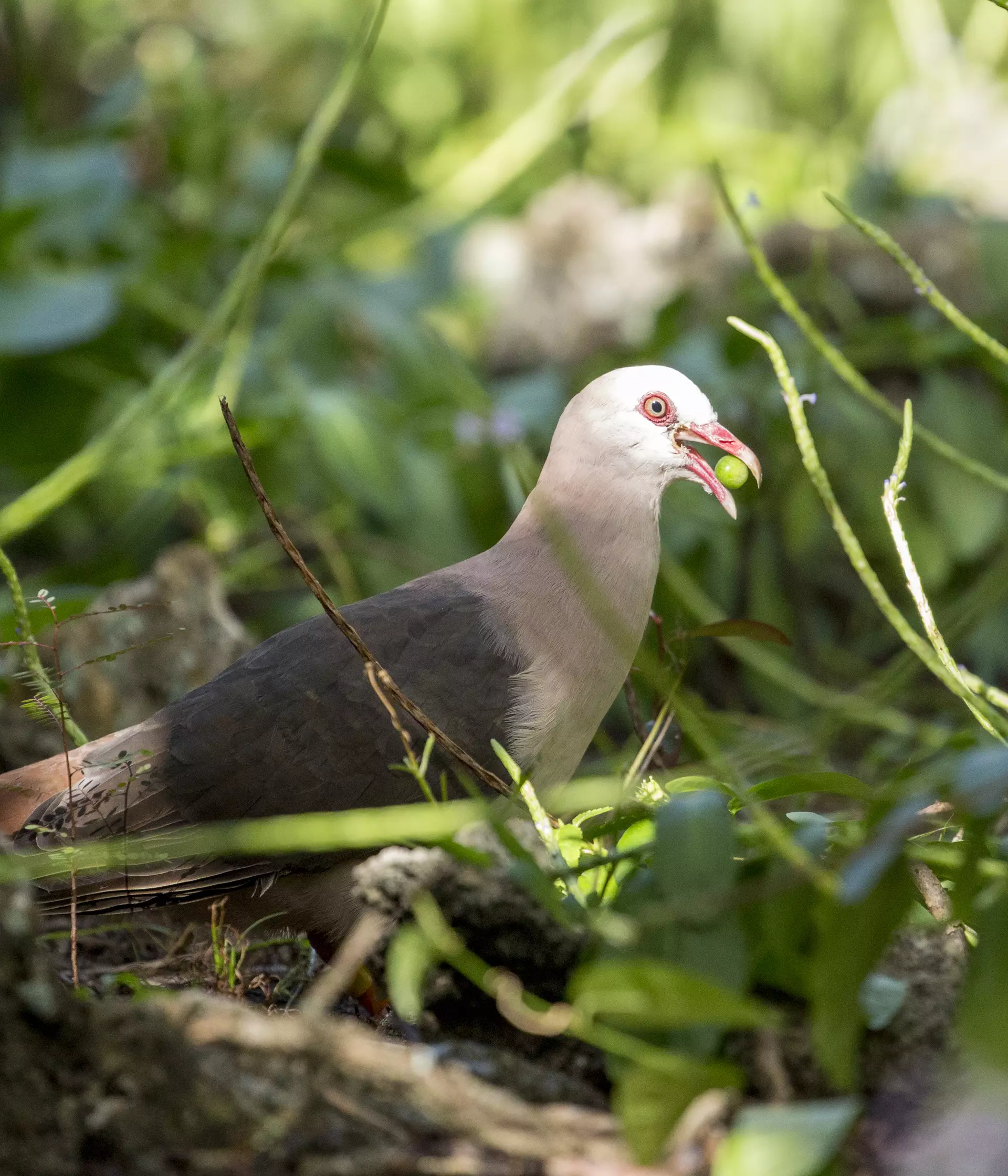Dr Malcolm Nicoll
Senior Research Fellow
The pink pigeon once flew from coast to coast across the Indian Ocean Island of Mauritius. But the introduction of predators and an abrupt loss of habitat restricted the remaining population to a tiny pocket of the island by the 1970’s. The remaining dozen birds were at risk of being lost forever, until an international conservation programme stepped in, and successfully boosted numbers to the 400 pink pigeons in the wild today.
We are supporting the pink pigeon conservation programme through captive breeding and rearing at London Zoo as part of the European studbook for the species and providing expertise to help manage the birds in Mauritius.
Pink pigeon conservation
One of the most successful management actions behind the recovery of the pigeon has been the creation and management of sub-populations via reintroduction into parts of their former range. This approach is ongoing, but not without its challenges, namely; deciding where to locate new populations, understand how these populations function as part of a meta-population structure and how to manage and monitor numerous pink pigeon populations in the long-term. All of these issues need to be addressed to secure the long-term future of this species.
Saving pink pigeons in Mauritius
The ZSL Institute of Zoology is closely involved in the pink pigeon project and, along with our conservation partners, provides the scientific evidence underpinning the species recovery programme. Our conservation work at London Zoo breeding pink pigeons is directly informing the reintroduction programme in Mauritius. Advancing knowledge to make hand-rearing of pink pigeons in Mauritius more effective.
The recovery programme is implemented by the Mauritian Wildlife Foundation (MWF) and the National parks and Conservation Service (Government of Mauritius), with support from the Durrell Wildlife & Conservation Trust (DWCT) and Chester Zoo.
We advanced the effectiveness of the pink pigeon reintroduction programme, through analysing the most efficient monitoring techniques. Our GPS tracking research has established a better understanding of pink pigeon behaviour and populations, which continues to help conservationists today. This research has not only guided the pink pigeon conservation programme but is supporting conservation work globally. Through providing a fresh insight into how a population of a highly threatened species behaves and may be managed in the long-term.
ZSL impact protecting pink pigeons
-
Developing best practice for pink pigeon hand-rearing at London Zoo, which is informing reintroduction programmes in Mauritius
-
A viable meta-population of pink pigeons in the remnant forest habitat.
-
Established an understanding of pink pigeon population and movement ecology.
-
A program of minimal monitoring and management.
From lab to field, hands on and behind the scenes, we’re working at the cutting-edge of conservation to help identify species most at risk, deepen understanding of the underlying causes of that risk and finding practical actions to overcome those causes and create routes to recovery.
